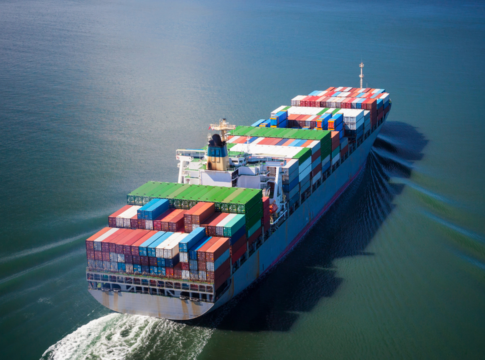The bulk carrier market is operating in a highly volatile geo-economic environment, with trends differing sharply across ship classes and coal altering the map of global trade.
At the same time, aggressive US trade policy and the weakened prospects of the Chinese economy are affecting the supply-demand balance.
Against the backdrop of forecasts for a weakening market in both 2025 and 2026, as US tariffs directly affect 4% of global demand for bulk carrier tonne-miles, there are factors that offer support, such as increased shipments of iron ore and bauxite from the South Atlantic to Asia.
This creates upward pressure – especially for Capesize – but is not enough to fully reverse the broader slowdown trend.
According to a report by Breakwave Advisors, despite a partial correction in the balances of the dry cargo freight market, spot freight rates remain at higher levels than the previous month.
Indicatively, Panamax rates are gradually de-escalating, while only Capesize rates remain strong, moving to highs of $20,000/day – the highest in the last decade (excluding 2021) for the season.
This resilience is partly attributed to local capacity shortages, which offer a boost in a period traditionally characterized by reduced activity.
At the same time, analysts estimate that in the short term the market will show relative stability and possibly a mild de-escalation, while forward freight agreements (FFA) remain slightly undervalued compared to spot, as the recent rise is considered difficult to sustain.
Iron ore
As for individual cargoes, the improvement in weather conditions in West Africa, following the deadly rains in Guinea, and the strengthening of iron ore exports from Brazil are expected to provide a boost to Capesize.
Coal
In contrast, China’s coal production is in a prolonged phase of oversupply, limiting the need for imports and redistributing global trade flows.
June imports fell 25.9% year-on-year to 33.04 million tonnes – the lowest since February 2023. In the first half, coal arrivals by sea fell 11.1% to 221.7 million tonnes. Imports from Indonesia and Russia fell by 30% and 19.7% respectively. This decline comes after a historic peak in 2024, when imports exceeded 500 million tonnes.
Meanwhile, domestic raw coal production rose 3% in June to 421 million tonnes, while in the first half it recorded a rise of 6.8%, reaching 2.49 billion tonnes.
According to data from the International Energy Agency (IEA), China and India are boosting investments in renewable sources, gradually reducing demand for coal.
For 2025, demand is forecast to decrease by 2% in the EU, almost 1% in China, while in the US an increase of 7% is expected due to higher electricity consumption.
In this context, the decline in Chinese demand for imported coal has direct consequences for dry bulk transport, limiting available routes and putting pressure on Panamax and Supramax.
However, resilient demand for iron ore and bauxite, combined with the low growth rate of the fleet, continues to provide support to the market.















